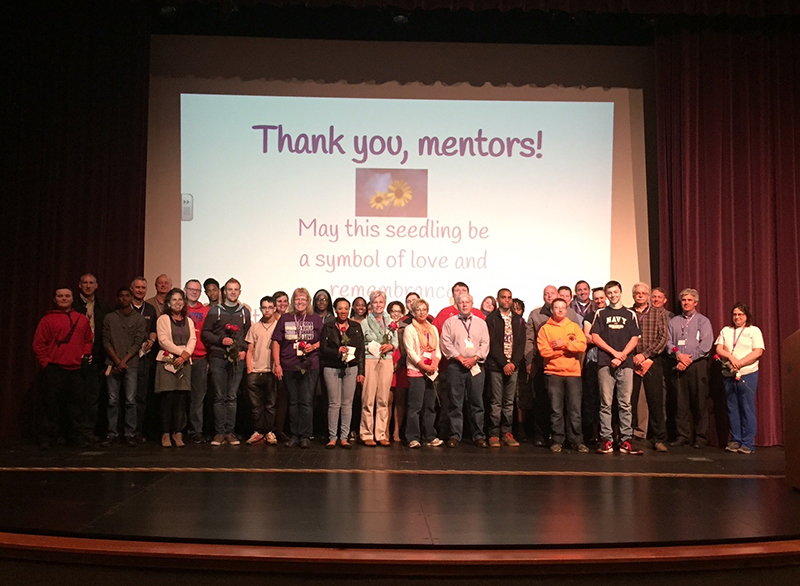New grant helps UA expand mentorship program for area students
When Danielle Judy begins her student teaching assignment this fall, she knows she’s going to be a better teacher, because of her opportunity to first be a mentor.
The University of Akron graduate student is one of the students in the LeBron James Family Foundation College of Education who trained to serve as a mentor to a group of academically at-risk 10th grade students at Barberton High School over the past academic year.
“I learned how to work better with students one-on-one,” says Judy. “I worked with a variety of students who all had unique learning styles, which helped me immensely.”
Opportunity for UA students and area youth
Thanks to a $99,947 Community Connector Grant just awarded by the Ohio Department of Education, UA and its community partners will be able to expand the mentorship program for the 2016-17 academic year. UA undergraduate and graduate education majors who are focused on social studies, language arts, or special education will serve as mentors with youth in seventh, 10th and 11th grades in Barberton Public Schools.

UA's Dr. Brad Maguth, far left, is pictured here next to Danielle Judy, along with other UA students and the Barberton High School students they mentored this past year. At far right, seated, is classroom teacher Rob Walker.
UA’s funding is part of the $9.4 million in new Community Connectors Mentoring Grants awarded this year by the Ohio Department of Education. The support for mentoring secondary school age youth was proposed by Gov. John Kasich in his 2014 State of the State address. The goal was to provide role models who could motivate at-risk students and help them develop the skills needed to succeed in school and the workplace.
Mentors as game changers
A Community Connector Grant of $56,000 was awarded to UA for the 2015-16 academic year to provide the initial training and launch the mentoring program.
“Well-trained mentors can be a game changer for youth identified as academically at-risk,” says Dr. Brad Maguth, an associate professor of social studies education in the Department of Curricular and Instructional Studies. He, along with Dr. Kristen Koskey, an associate professor in the Department of Educational Foundations and Leadership, are co-principal investigators on the grant. Dr. Al Daviso, an associate professor in special education, will help coordinate the middle school portion of the mentoring program.
“Our grant proposal was scored the third highest out of 72 other Community Connector Grant applications,” adds Maguth. “We are excited these funds will help support and strengthen our efforts to ensure some of our area’s most academically vulnerable youth have access to a trained adult mentor for needed guidance and support.”
The grant proposals are the culmination of years of observation and experience in the field.
“We’ve had mentors embedded at Barberton High School for the past six years, and what we’ve found is that our education majors who ‘live-in schools’ before student teaching are more effective,” continues Maguth. “They understand what many of these students are struggling with in and outside of the classroom.”
Judy agrees.
“I'd like to think I showed the sophomores I worked with that they were capable of more than they thought,” says Judy, who is earning an M.A. in Adolescent to Young Adult Integrated Social Studies and plans to graduate in December. “Their biggest struggle seemed to be their own opinions of themselves.”

Mentors and mentees gathered for an end-of-the year celebration at Barberton High School.
But working one-on-one can yield positive results.
She recalls when the young woman she had helped with history then asked for Judy’s help with her other classes. “We came up with a schedule to work after school. She then began to open up to me in other ways as well.”
Andrew Babbitt, who graduated in May with a B.A. in Adolescent to Young Adult Integrated Social Studies (7-12), says his experience as a mentor was a win-win.
“I believe I was able to help the students by making connections with them, working in a one-on- one setting, being an advocate for them, and by modeling proper organization, study habits and work-ethic,” says Babbitt. “I learned the time and dedication needed in the profession, and the value of working with other teachers to achieve a goal.”
